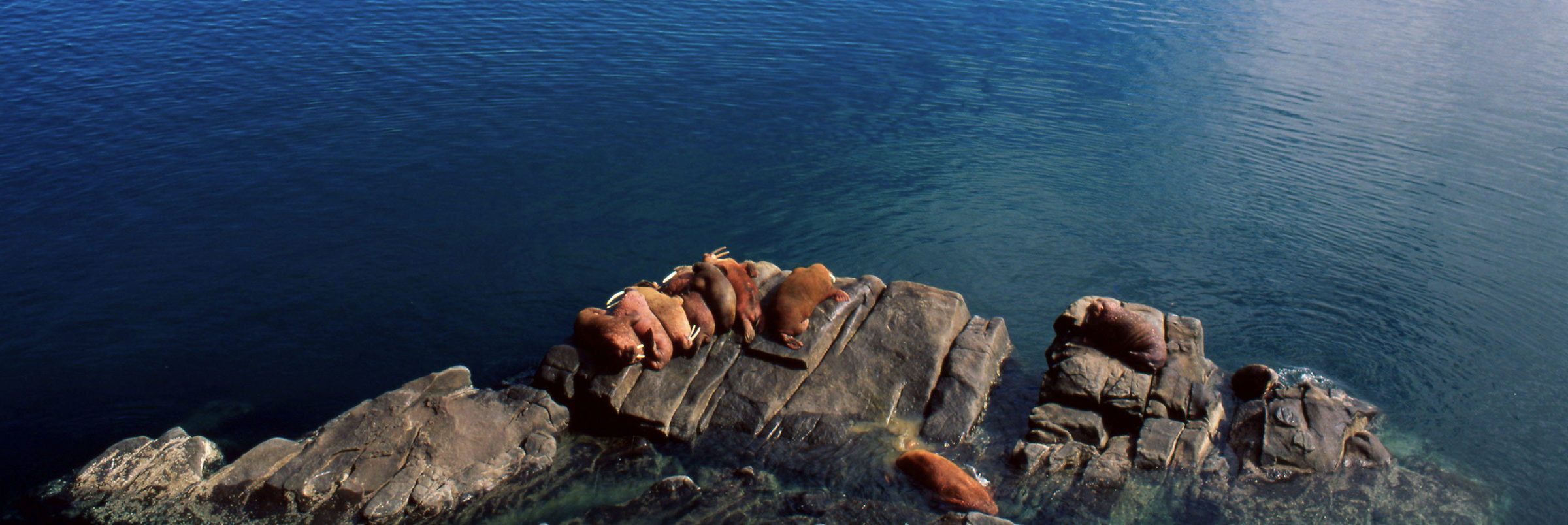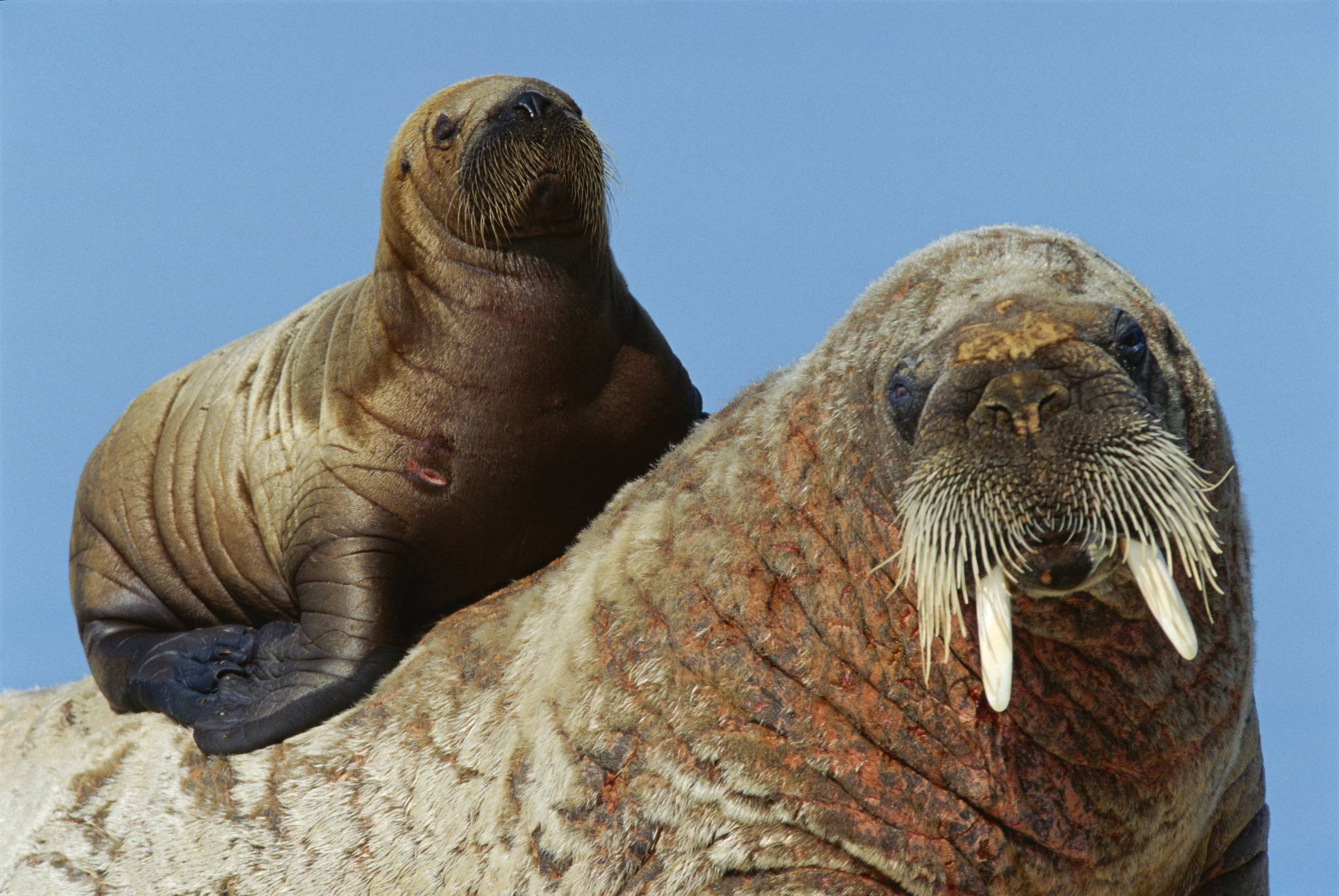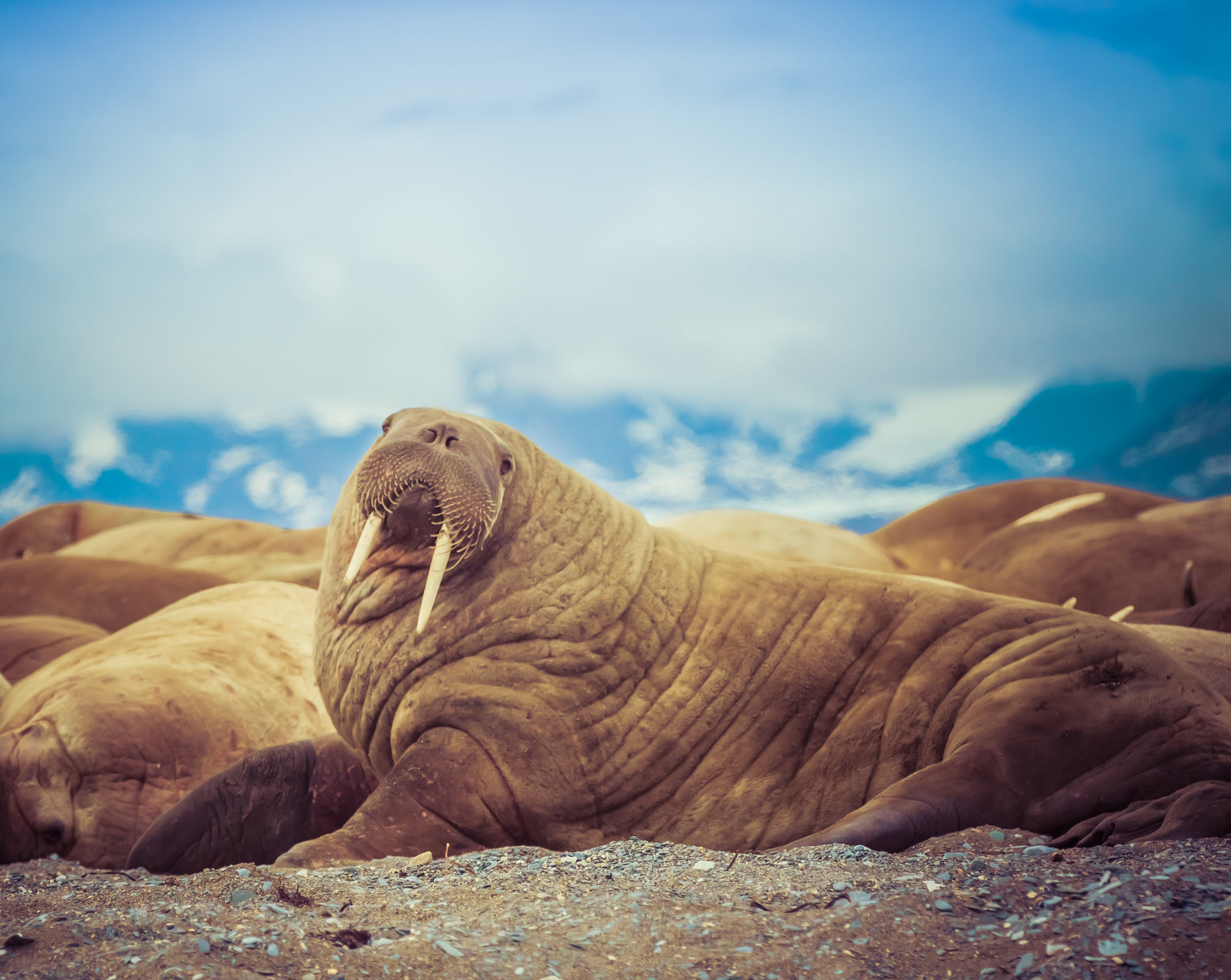Ten wildest facts about walrus
The Arctic has its fair share of amazing animals. There’s the fierce and majestic polar bear, the clever and crafty Arctic fox and, of course, the sleek and magical narwhal.
Then there’s the walrus.

Walrus are easily recognizable by their wrinkly brown skin, long tusks and massive size. There are two subpopulations: Atlantic and Pacific walrus. And, although it might not seem like it, they are incredibly graceful under water.
Curious about walrus? Here are some of our all-time favourite facts about these wonderful and quirky Arctic animals.
1. Special whiskers and vacuum lips
Walrus prefer to munch on bivalve molluscs. To find molluscs walrus dive in shallow waters and search the bottom with their highly sensitive whiskers or vibrissae. When they locate a mollusc, they create a seal with their lips and use their tongue to produce a vacuum to suck the meat directly out of the shell.
2. Pink under the sun
Walrus have brown skin but on very warm days their skin can appear rosy pink under the sun. Similarly, if they are diving in icy cold water for long periods of time, they turn almost white.

3. They run like the wind
Walrus are quite fast on land – in fact, they can run as fast as humans. They run on all four flippers like dogs.
4. They can slow their heartbeat
In order to withstand the icy waters of the Arctic Ocean, walrus can slow down their heartbeat.
5. They sing
From December to March, male walrus erupt into song, making all sorts of strange noises under water, including knocks, barks, taps, clicks, rasps, grunts and bellows. Some males sing continuously for up to 65 hours!

6. They cuddle
Walrus mothers cuddle their calves just like humans do. They are very protective of their calves, picking them up with their flippers and diving into the water when they are threatened. Calves tend to stay with their mothers for up to five years.
7. They go with the floe
Walrus migrate with ice floes. They use the sea ice as a platform for resting. Walrus mothers also leave their young calves on ice floes between dives for food.
8. Tooth-walkers
Their scientific name, Odobenus rosmarus, means tooth-walking sea horse.
9. They like to hang out together

Walrus are very social. They hang out in large tightly packed herds usually separated by sex. A group of walrus can generate so much heat that sometimes a cloud of fog will form above them!
10. Epic tusks
Walrus tusks are in fact canine teeth that never stop growing. They use them to keep breathing holes open in the ice, to fight other walrus, and to help haul themselves out of the water and onto sea ice.
Walrus are a keystone Arctic marine species dependent on sea ice, important to both nature and people throughout the Arctic. As sea ice melts, walrus populations will be exposed to more industrial activity. WWF supports local efforts to safeguard several walrus haulouts and walrus research, including through our Arctic Species Conservation Fund.
